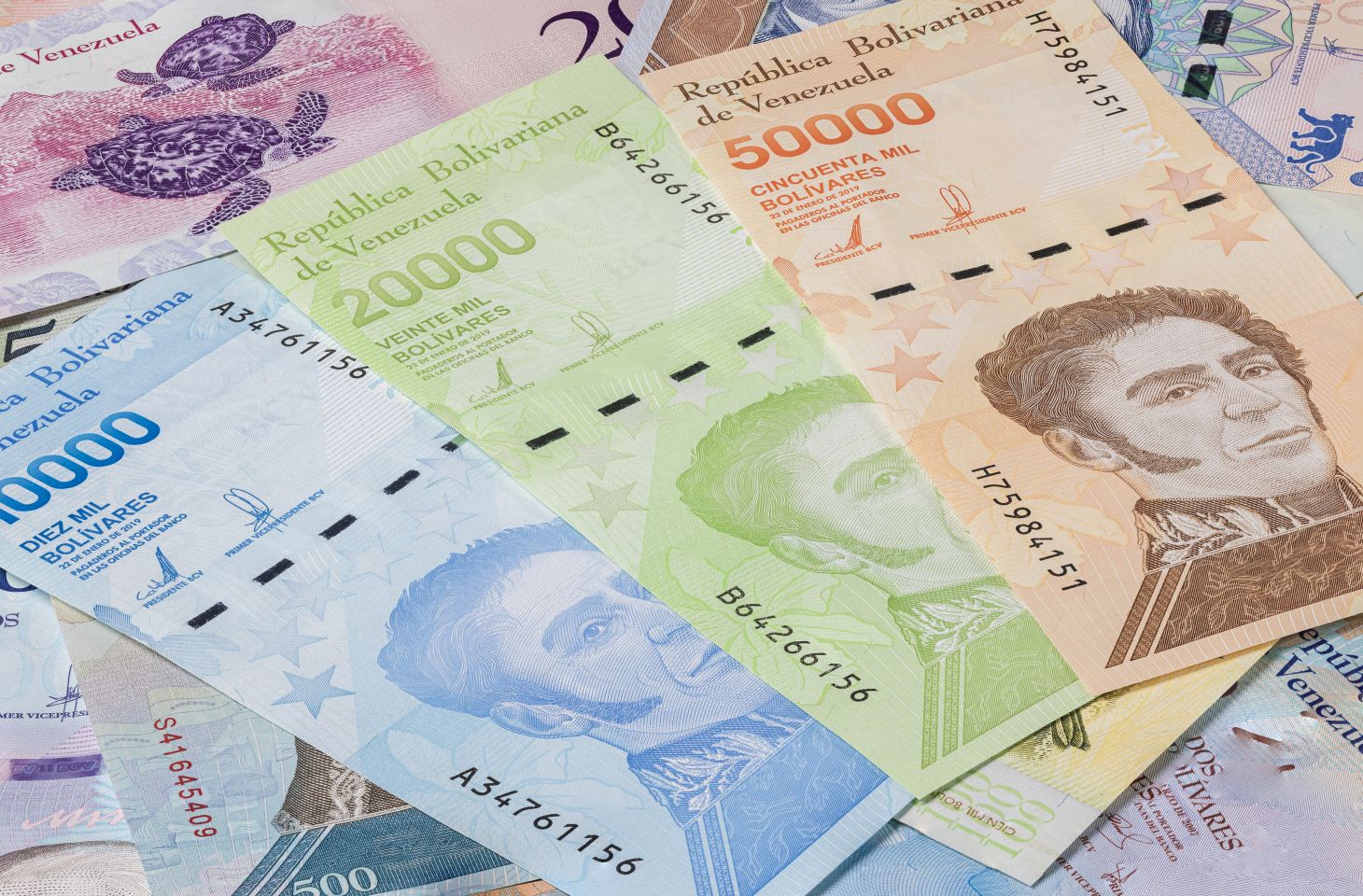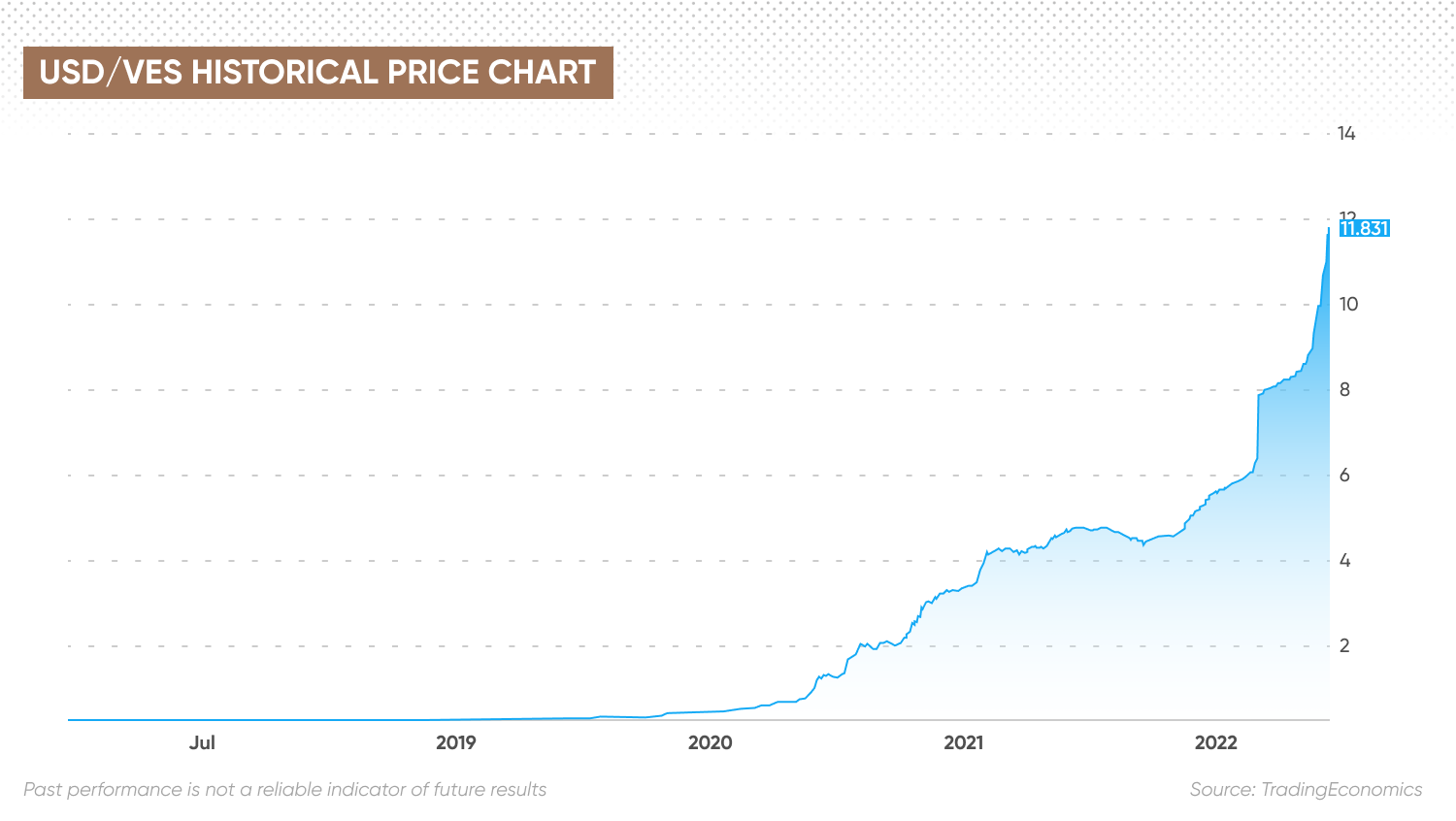Venezuelan bolivar forecast: VEF tumble sets back Maduro government’s fight against inflation
The Venezuelan bolivar has been falling consistently these past few months, will it rebound or keep dropping?
Despite beginning the year on unconventionally stable footing, the Venezuela bolivar (VEF) has returned to volatility, with its old foe inflation causing devaluation and concerns for the country’s stability.
Will the latest Venezuelan bolivar forecasts point to more anxiety for the embattled currency in 2023 and beyond?
What is the Venezuelan bolivar (VEF)?
The Venezuelan bolivar is the national currency of Venezuela. Previously pegged against the US dollar (USD), the currency has now tended to float on the open market as a floating exchange rate.
Like other currencies, the bolivar is driven by classic principles of supply and demand. This can be affected most prominently by inflation, interest rates, trade and wider market risks.
Over the last five years, the bolivar has been heavily depreciated by skyrocketing inflation, crippling the country’s economy and beginning a vicious cycle of currency devaluation and rising prices. Hyperinflation engulfed the country in 2019, and has forced two currency reevaluations in the space of four years to stem massive devaluations.
Interest rate movements also influence the currency by affecting the supply money in the economy. Rate hikes reduce the supply of money in the system, making it more attractive to own. Many countries are currently hiking rates and have inadvertently become involved in a reverse currency war.
Venezuela’s central bank also has to contend with selling its currency on the open market, due to the Venezuelan government’s economic policy. After years of reigning in spending, the government is unravelling the purse strings again.
Bolivar historical performance
 The bolivar has faced a turbulent past, marred by domestic economic issues linked to rampant hyperinflation.
The bolivar has faced a turbulent past, marred by domestic economic issues linked to rampant hyperinflation.
In 2018, the Venezuelan government was forced to reevaluate its currency in the face of that hyperinflation, changing its currency code from VEF to VES, being set at a conversion rate of 1:1,000,000. VEF had originally been introduced to replace the VEB.
More depreciation amid soaring inflation followed in 2019, exceeding 65,000%, according to the IMF. Shelves were emptied and a humanitarian crisis created 6 million asylum seekers. One dollar was worth 23,344 bolivars in October 2019, but by August 2021 it had reached 4.1 million bolivars as price rises devalued the currency.
The government was forced to reevaluate the currency once more in 2021, dropping the USD/VES exchange rate from around VES4m to VES4 to $1.
The VES went on to enjoy a period of stability, aided by fiscal hawkishness by the government and boosted by increased global energy insecurity following Russia’s invasion of Ukraine.
Venezuela, as an energy exporter, was able to offer the bolivar as a more attractive option, with the currency even strengthening against the dollar between December 2021 and March 2022.
But since then, more depreciation has ensued. The VES fell gradually against the USD through the last summer, partly as the US Federal Reserve (Fed) tightened rates and investors flocked to the greenback as a safe haven.
On 26 August, the bolivar plunged around 33% against the USD to VES7.8 as a combination of fewer sales of its currency on the international market and a pay deal with labour unions that lifted spending, forced the currency down again.
While more stability followed briefly, November and December have marked a difficult period for the currency. A pickup in inflation – an index compiled by Bloomberg suggested prices in the country rose by 300% in November – and a broader jump in spending pushed the VES up to 11.66.
In total, the VES has lost more than 60% of its value against the dollar in the year-to-date (YTD).
Against the euro, the VES has faced similar challenges. However, the euro’s less secure position economically this year, in the face of an energy crisis, meant the bolivar has fared slightly better.
The VES strengthened against the EUR following the beginning of Moscow’s invasion of Ukraine, but has fallen 57% the YTD.
What has been driving the VES lately?
Venezuela has been fighting another dip in its currency in 2022. Although the increased need for an alternative to Russian oil made the country more appealing in the first half of the year, reaping the benefits has become more difficult by sanctions imposed on the country by the US and its allies. These sanctions limit purchases of oil in Venezuela and make imports increasingly prohibitive.
While any potential developments remain at the negotiating table, the bolivar looks likely to continue to struggle.
However, Daniela Arevalo and Gabriela Arevalo from Littler Mendelson PC wrote in an October note that the economy may be on a better path with the resumption of diplomatic relations in August with Colombia.
Venezuela had been able to control its currency partly on the back of a stabilisation policy, which, according to a report by Daily Sabah, saw the country inject $2.2bn into its internal market in 2021-2022. That was buffered by a stronger domestic economy generating demand through oil and other activities.
However, the policy hasn’t been completely positive. Lloyds Bank pointed out the impact of this exchange rate policy on Venezuela’s economy:
In a November analysis for the Warsaw Institute, Kacper Gatlik wrote that the war in Ukraine had left the Venezuelan economy in a slightly more stable position than before, but sanctions and a myriad other risks made things precarious:
“An increase in oil exports in September 2022 from Venezuela to China, Cuba, and Europe, among others, is expected to boost revenues for this Bolivarian country. This, however, does not improve Venezuela’s current social and economic situation.
“The 2020 sanctions imposed on this country by Western and Latin American countries have limited Venezuelan oil exports to global oil trade markets. The public receives food rations from the state, and the consumer market is still constrained due to the enforced sanctions.”
The country’s central bank has struggled to reign in prices in the face of renewed economic stimulus from President Nicolás Maduro’s government.
“Venezuela has technically exited from hyperinflation, but it’s locked in high monthly inflation rates,” Daniel Cadenas, an economics professor at the Metropolitan University in Caracas, told Bloomberg.
“We won’t see less than 100% annualised inflation unless there is a change in economic policy,” Cadena said of a likely direction of any VES forecast.
VES forecast: Analysts’ views
USD/VES forecasts
As of 7 December, a Venezuelan bolivar forecast for 2023 by Trading Economics predicted one dollar to 13.14 bolivar in 12 months’ time, a 12% depreciation on current levels against the greenback.
Panellists at FocusEconomics had a Venezuelan bolivar forecast of 28.01 at the end of 2023, and 59.3 at the end of 2024, marking a heavy depreciation for the currency.
In a November note by law firm Holland & Knight, the group said Venezuela was likely to continue to intervene in foregin exchange in a bid to maintain stability:
“Foreign currency allocations made from January to October of this year, amount to US$3 billion, practically three times the amount placed in 2021. Everything indicates that the BCV will maintain its recent strategy of optimising foreign exchange intervention by distributing the sale of foreign currency throughout the week, as required by the behaviour of the parallel exchange rate.”
Note that analysts’ predictions can be wrong. Forecasts shouldn’t be used as a substitute for your own research. Always conduct your own due diligence before trading. And never invest or trade money you cannot afford to lose.
Stay up to date with the major forex pairs using our currency strength meter.
FAQs
Has the Venezuelan bolivar been going up or down?
The Venezuelan bolivar has been falling this year, losing more than 60% of its value against the dollar.
Will the Venezuelan bolivar get stronger in 2023?
No-one can say for sure. At the time of writing (7 December), analysts tended to agree the bolivar could continue to struggle against the dollar next year, however, these forecasts can be wrong and have been inaccurate in the past.
Always do your own research before making any investment decisions and never invest more than you can afford to lose.
Is it a good time to buy Venezuelan bolivar?
How you invest is a personal decision depending on your risk tolerance and investing strategy. You should do your own research to take an informed view of the market and decide whether the Venezuelan bolivar is an appropriate fit for you. And never invest more than you can afford to lose.